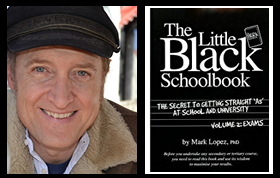Dr Mark’s The Meaning in a Nutshell
Alan Parker (director) Chris Gerolmo (writer), Mississippi Burning (1988)
The film Mississippi Burning (1988) was directed by Alan Parker and written by Chris Gerolmo. The screenplay was inspired by, but does not closely follow, historical events involving the murder of three civil rights activists by the Ku Klux Klan in Mississippi in 1964, and the subsequent FBI investigations and prosecutions that helped break the power of the Klan in that state.
The film contrasts two approaches to upholding justice. One approach, which is pursued by an idealistic detective, agent Alan Ward, involves following procedure and obeying the law in order to apprehend the villains. The other approach, advocated by a more streetwise detective, agent Rupert Anderson, involves bending or breaking the law to bring the villains to justice, these being bad men who continue use violence and who seek to prevent justice from being done. The cinema audience is initially positioned to feel frustrated by forlorn attempts to follow the law to enforce the law, and exhilarated in the last part of the film when unorthodox methods are used successfully to break the power of the villainous Klan. The film ends up demonstrating the value of unorthodox methods to fight this terrorist organisation.
The film depicts the Klan as consisting of ignorant, cruel white people. The Klan is violent, intolerant and bigoted. It is a terrorist organisation that harms or kills decent people. Although the Klan was much discredited and diminished by the time this film was made, the film can be seen as part of the broad campaign to further discredit the Klan and further diminish its influence on American life. The film puts the argument that once the power of the Klan is overthrown, good people can find their voice. The film conveys that not all Southerners were bad, and, when given the chance, these good Southerners can advance the progress of integration.
The film also argues strongly against the policy of racial segregation (enforced by Jim Crow Laws) that characterised the American South after the American Civil War and before this system was dismantled in the 1960s following the success of the civil rights movement. The system of racial segregation was intended to severely restrict the ability of emancipated black slaves, or their descendants, to progress economically and socially, and it kept the races as separate as possible. African-Americans were expected to use parallel and often inferior facilities, like washrooms, and they were banned from entering most institutions and venues used by whites. Buses and restaurants were divided into zones for the different races. The legal system and police, dominated by whites and infiltrated by the Klan, tended to work against providing justice for African-Americans. In addition, African-Americans were deterred from registering to vote. This prevented them from achieving the political representation needed to change this oppressive system. The civil rights workers depicted in the film, who were murdered by the Klan, were promoting a voter registration campaign that was ultimately intended to contribute to dismantling racial segregation. The Klan used violence and murder to preserve this system of racial segregation.
The film presents racial segregation as unjust, cruel and anachronistic, and as an obstacle to progress and to the United States living up to its liberal-democratic ideals. The film concludes on the hopeful note that the system of segregation in the American South was cracked and would soon crumble. Here, the film capitalised on the capacity of the cinema audience to view racial segregation with the advantage of historical hindsight, reminding the cinema audience of this unjust system in order for them to feel pleased that this unjust system has been relegated to history.
The film advances the argument that racism has to be combatted to be beaten. It even condones extreme measures to do this, meeting violence with violence, fire with fire. The film implies that because the defenders of racist intuitions and practices are willing to use extreme measures to defend the racist status quo, those nobly taking up the cause against racism have to meet ‘like with like’ in order to prevail. While the film condemns those who commit acts of racist violence, it is also critical of many of those who, although they may not commit the acts themselves, do not intervene to prevent them. They therefore share some of the guilt. For example, the mayor supported segregation but had not committed crimes. The mayor knew about the racist violence of the Klan but did nothing to stop it. He eventually committed suicide, presumably out of shame. The suicide also implies that the days of those who support racial segregation are coming to an end. The film uses this character’s guilt as a bystander to push home the message that bystanders in a community where racist violence is perpetrated share some responsibility for these acts. On a more positive note, the film implies that once the worst racists have been defeated, the lesser racists will gradually fall into line and accommodate themselves with the new order. The film also implies that once the worst racists are defeated, those who are not racist will have greater opportunity to influence the prevailing culture.
Student resources by Dr Mark Lopez
© Mark Lopez 2021 All RIGHTS RESERVED
The purpose of the concise notes of Dr Mark’s The Meaning in a Nutshell is to provide much needed help to students seeking to unlock the meaning of the texts with which they have to deal. (More elaborate notes are provided in lessons as part of my private tutoring business.)
Subject: Mississippi Burning meaning, Mississippi Burning themes, Mississippi Burning analysis, Mississippi Burning notes
